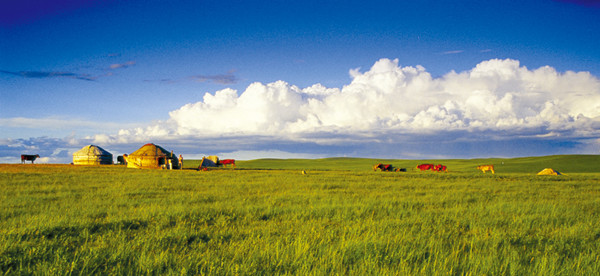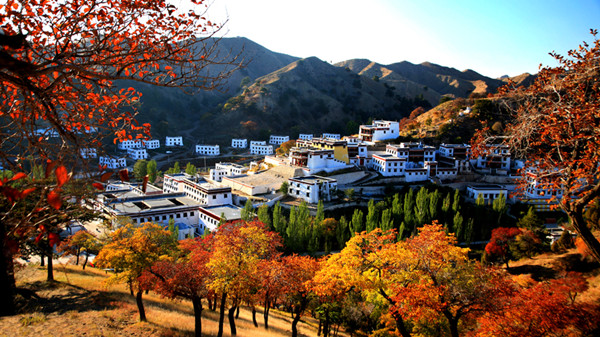Jiuyuan district launches autumn tourist routes
Jiuyuan district in Baotou, North China's Inner Mongolia autonomous region, has raised its profile as well as greatly expanded its tourism appeal through its recent launch of quality autumn tourist routes.
Journey of natural scenery:
This route highlights the natural beauty of the district as well as its unique autumn look.

Xilamuren grassland [Photo provided to chinadaily.com.cn]
Xilamuren grassland – Honggeer Ovoo – Jimusitai – Hasar Memorial Hall – Mandula Port – Aolunsumu Ancient City – Chunkun Mountain
Xilamuren Grassland is located in Darhan Muminggan Joint Banner and is full of history and culture. The vast and magnificent grassland scenery combined with unique ethnic customs is its most attractive feature. It also features many national A-level tourist attractions such as Honggeer Ovoo, Jimusitai, Hasar Memorial Hall, Bailing Nadam Venue and Mandula Port.
In Guyang, you can find the unique Chunkun Mountain. This is the only plateau grassland in the entire Inner Mongolia region and has an altitude of 2,340 meters, which is the highest place in Baotou. The air on the mountain is fresher and cooler with hundreds of wild plants and species of grass. Therefore, it is also known as "China's Most Beautiful Pastoral."
Journey of history and culture:

Located in Shiguai district, Baotou, Inner Mongolia autonomous region, Wudang Lamasery is one of the three most famous lamaseries of Tibetan Buddhism in China. [Photo provided to chinadaily.com.cn]
Miaofa Temple – Qiaojia Street – Meidai Monastery
The history of Baotou can be traced back to the Spring and Autumn Period (770-476 BC) and the Warring States Period (475-221 BC), so its unique historical heritage has created deep richness of culture.
Miaofa Temple is the most ancient Chinese Buddhist temple in Inner Mongolia as well as a national 2A-level scenic spot and a cultural relic preservation unit. The temple was established during the reign of Emperor Xianfeng of the Qing Dynasty (1644-1911), and then reconstructed and expanded in 1866. It witnessed the development of Baotou while being the center of the Baotou Buddhist community.
Qiaojia Street is located in Donghe district where the Qiao family of Shanxi merchants lived in Baotou a hundred years ago. It can be said that it was the commercial and cultural center of Baotou at that time. Today's Qiaojia Street also continues to shine with traditional characteristics of that time, and also integrates shopping, restaurants and entertainment. It has perfectly combined ethnic characteristics and ancient traditional style with modern life.
As one of the important historical and cultural attractions in Baotou, Meidai Monastery has continued to develop since the reign of Emperor Jiajing of the Ming Dynasty in 1565. It has more than 250 ancient halls, including the Grand Hall and the Dalai Lama Temple, which cover an area of 62,500 square meters.
The most precious thing in the monastery, after being rebuilt by Alatan Khan (the 17th grandson of Genghis Khan), is more than 1,500 sq m murals from the Ming (1368-1644) and Qing (1644-1911) dynasties. Therefore, the entire monastery is a collection of architectural styles from the Han, Tibetan, and Mongolian ethnic groups.
